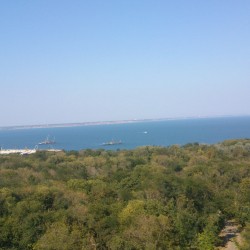Tatar wedding rituals
What Zawaj Tatar (Turks) wedding customs have survived to this day?
Some customs are still preserved in the villages. These are su yuly kursatu (showing the bride the way to the spring), oi kienderu (dressing the groom’s house/apartment with home decoration items from the bride’s dowry), kilen tokmachy (bride’s noodles – a feast held in the groom’s house, to which older relatives from the groom’s family and bride and on which the obligatory dish is noodle soup prepared by the bride), etc. The wedding custom is also preserved in the villages, such as bringing treats from the groom's relatives on nicknames, and the bride's relatives for the wedding.
The traditional ritual of meeting newlyweds is widespread both in the village and in the city, including treating the young with chak-chak, honey-butter and laying a soft object (carpet or pillow) under the bride's feet with wishes for a prosperous family life.
Sabantuy
Sabantuy, what kind of holiday is this❓
The favorite holiday of the Tatar people, Sabantuy, is both ancient and new, a holiday of labor, in which the beautiful customs of the people, their songs, dances, rituals merge into one.
The name of the holiday comes from the Turkic words: saban - a plow and tui - a holiday. Previously, Sabantuy was celebrated in honor of the beginning of spring field work (at the end of April), but now - in honor of their end (in June).
This ancient holiday was described in his works in 921 by the famous explorer Ibn Fadlan, who arrived in the Bulgars as an ambassador from Baghdad.
In the old days, the celebration of Sabantuy was a big event, and it took a long time to prepare for it.
All winter girls, young women prepared gifts - weaving, sewing, embroidering. In the spring, before the start of the holiday, young horsemen collected gifts around the village for future winners in competitions and folk games: embroidered scarves and towels, pieces of calico, shirts, chicken eggs.
▶ Gradually, Sabantuy became a universal and interethnic holiday - today it is celebrated in villages, towns, districts, cities, the capital of Tatarstan, Moscow, St. Petersburg and in many other regions of the country, as well as in different parts of the world where Tatars live.
At present, Sabantuy has acquired the status of a public holiday: decrees and resolutions are issued on the preparation, dates and venues, organizing committees are appointed from leaders of the highest rank at each level (village, township, district, city, republic), sources of funding are determined. The ancient holiday is gradually supplemented with modern traditions, but the main features of the celebration are preserved, passing from century to century.☝
In the Republic of Tatarstan, Sabantuy takes place, as a rule, in June, in three stages. On the first Saturday after the end of spring sowing, the holiday is held in the villages and villages of the republic, a week later - in large cities of Tatarstan, and a week later the main Sabantuy is held in the capital of the republic, Kazan.
POST #5
How many Tatars live outside the Russian Federation❓
Let's start with dry statistics. In total, there are about 12 million Tatars in the world. More than 5.5 million people live in the Russian Federation. They are the second largest people after the Russians. At home in Tatarstan, they make up 53% of the total population.
❓ The question arises, where are the rest?
▶They live abroad Tatars in many countries of the world, preserving their national culture, customs and language. Most of the Tatars are in the near abroad, on the territory of the former Soviet republics. There are 325 thousand in Uzbekistan alone. Then, in descending order, in Kazakhstan, Ukraine, Kyrgyzstan, Azerbaijan, Tajikistan and Belarus. Even in Lithuania, there are about 32,000 Tatars left.












